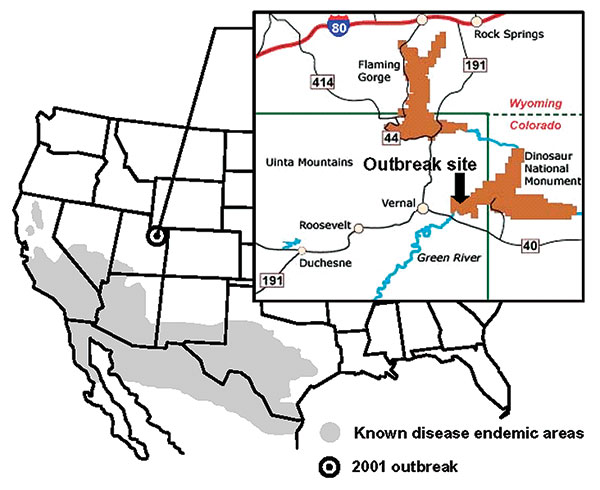Volume 10, Number 4—April 2004
Research
Coccidioidomycosis among Workers at an Archeological Site, Northeastern Utah
Figure 1

Figure 1. Known geographic distribution of Coccidioides immitis in the United States and location of the 2001 coccidioidomycosis outbreak in Utah. Source: U.S. Geological Survey, Operational Guidelines for Geological Fieldwork in Areas Endemic for Coccidioidomycosis (Valley fever), 2000.
Page created: February 09, 2011
Page updated: February 09, 2011
Page reviewed: February 09, 2011
The conclusions, findings, and opinions expressed by authors contributing to this journal do not necessarily reflect the official position of the U.S. Department of Health and Human Services, the Public Health Service, the Centers for Disease Control and Prevention, or the authors' affiliated institutions. Use of trade names is for identification only and does not imply endorsement by any of the groups named above.